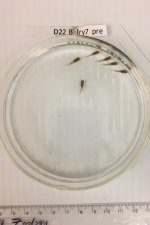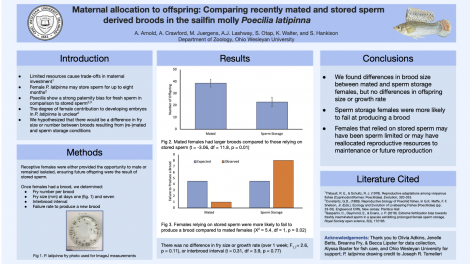Alena Arnold, AJ Lashway, Alyssa Baxter, Katherine Walter, Makenna Juergens, and Alax Crawford
“Comparing recently mated and stored sperm derived broods in the sailfin molly Poecilia latipinna”
About Sailfin Mollies:
The sailfin molly, Poecilia latipinna, is a species of fish related to guppies. Sailfin mollies are found in shallow waters from estuaries to ditches along the coast of northeastern Mexico and the southern United States. These fish have a unique reproductive system, both giving birth to live babies in broods and having the capacity to store male sperm for future reproduction. We investigated how the use of sperm storage affected the size and growth rates of fry, as well as the success of broods overall.
Introduction:
Sailfin mollies’ use of stored sperm may be beneficial in cases such as a previous mating with a preferred male or lack of access to a mate during a reproductive cycle. However, as sperm viability decreases over time, females may adjust maternal investment (how much energy the mother invests in each brood) relative to offspring size or resources. We used the sailfin molly to better understand whether females vary in their investment within a reproductive cycle, depending on whether their brood was produced with fresh or stored sperm.


